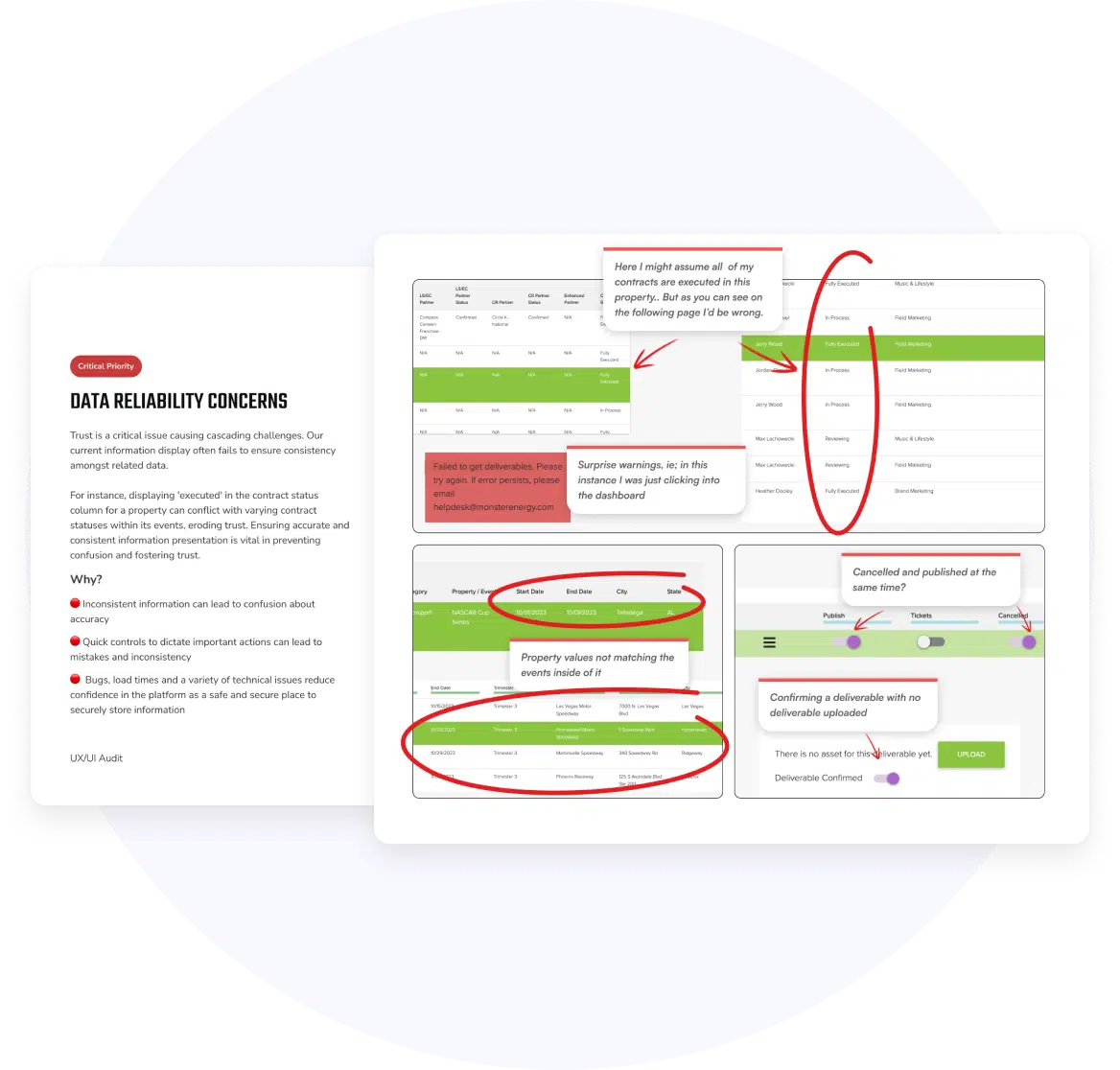What is a UX Competitor Analysis?
A UX competitor analysis is a strategic process that involves evaluating and studying the user experience (UX) aspects of your competitors’ digital products or services. It aims to gain insights into how competing products or services are designed, structured, and received by users. By thoroughly assessing the UX strategies of your competitors, you can identify strengths, weaknesses, opportunities, and threats that can inform and improve your own UX design and strategy.
Key Elements of a UX Competitor Analysis
In a UX competitor analysis, you investigate various aspects of your competitors’ digital presence, including their websites, mobile apps, or other digital interfaces. The analysis typically involves examining the following key elements:
- User Interface (UI): Evaluate the visual design, layout, and overall aesthetics of your competitors’ digital interfaces. Look for design elements that enhance or hinder user engagement and satisfaction.
- Navigation and Information Architecture: Assess how easily users can navigate through your competitors’ platforms. Analyze the organization of content, menus, and information to identify user-friendly or confusing structures.
- Content Quality: Examine the quality and relevance of content presented by your competitors. Determine how effectively they communicate their value proposition and engage users.
- Interaction Design: Study the interactive elements within your competitors’ products, such as buttons, forms, and calls to action. Evaluate the ease of use and responsiveness of these elements.
- Performance: Measure the loading speed and overall performance of your competitors’ digital assets. Slow-loading websites or apps can lead to high bounce rates and user frustration.
- User Engagement: Explore how your competitors engage with their users. This includes examining feedback mechanisms, social media integration, and community building efforts.
- Accessibility: Assess whether your competitors’ digital interfaces adhere to accessibility standards, ensuring that they are usable by people with disabilities.
- Mobile Experience: Investigate the mobile-friendliness of your competitors’ designs. Analyze how well their mobile apps or responsive websites adapt to a variety of devices and screen sizes.
- Conversion Pathways: Examine the user journey and conversion pathways on your competitors’ platforms. Identify any friction points that might hinder users from completing desired actions, such as making a purchase or signing up.
- Feedback and Reviews: Analyze user feedback, reviews, and ratings of your competitors’ products. Understand what users appreciate and dislike about their experiences.
Why is UX Competitor Analysis Essential?
UX competitor analysis is not merely a passive observation of your competitors’ digital offerings; it’s a proactive strategy that provides several significant benefits for your business or product:
- Identifying Best Practices: By studying competitors who excel in UX design, you can identify and adopt best practices that contribute to superior user experiences.
- Spotting Opportunities for Improvement: Analyzing competitors’ weaknesses reveals opportunities for you to differentiate and provide a better UX, gaining a competitive edge.
- Enhancing User Satisfaction: Understanding what frustrates users on competitor platforms allows you to create a more satisfying and user-friendly experience, which can lead to increased customer loyalty.
- Optimizing Conversion Rates: By pinpointing conversion bottlenecks in your competitors’ funnels, you can optimize your own conversion pathways and increase the likelihood of user conversions.
- Reducing Risk: Informed decision-making based on competitor analysis reduces the risk of costly UX design mistakes and helps you allocate resources more effectively.
- Staying Ahead of Trends: Regular UX competitor analysis keeps you updated on emerging UX trends and technologies, allowing you to stay relevant and innovative in your field.
- Enhancing Accessibility: Evaluating competitors’ accessibility practices makes sure that your digital products are inclusive and can be used by a broader audience.
How to Conduct a Comprehensive UX Competitor Analysis
Let’s go through the step-by-step guide to conducting a comprehensive UX competitor analysis.
- Identify Competitors: Start by identifying your main competitors in the digital space. These could be direct competitors or businesses with a similar target audience.
- Define Objectives: Clearly outline your goals and objectives for the analysis. What specific aspects of UX do you want to investigate? What insights are you seeking?
- Gather Data: Collect data on your competitors’ digital assets. This includes their websites, mobile apps, and any other relevant digital interfaces. Use a combination of tools, such as user testing, usability surveys, and analytics, to gather qualitative and quantitative data.
- Evaluate UX Elements: Systematically assess the UX elements mentioned earlier, including UI design, navigation, content, and more. Document your findings and categorize them as strengths or weaknesses.
- Analyze User Feedback: Scrutinize user reviews, comments, and ratings on competitor platforms. Look for recurring themes and pain points that users have highlighted.
- Benchmark Performance: Compare the performance of your competitors’ digital assets, such as page load times and mobile responsiveness, against industry benchmarks and standards.
- Identify Opportunities: Based on your competitive analysis, identify opportunities for improving your own UX design. Focus on areas where you can offer a superior experience to users.
- Create an Action Plan: Develop an action plan that outlines the steps you will take to enhance your UX based on the insights gained from the analysis. Prioritize improvements and set clear timelines.
- Iterate and Monitor: UX competitor analysis should be an ongoing process. Continuously monitor your competitors and the evolving UX landscape to adapt and refine your strategies.
To sum it up, UX competitor analysis is a valuable practice for businesses seeking to create user-centric digital experiences. By understanding your competitors’ strengths and weaknesses, you can leverage this knowledge to optimize your own UX design, stand out in the market, and ultimately provide a superior experience for your users.







